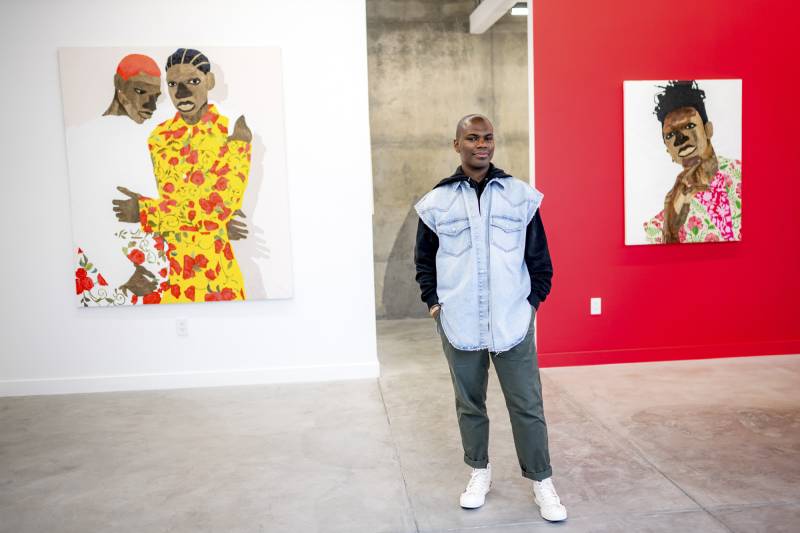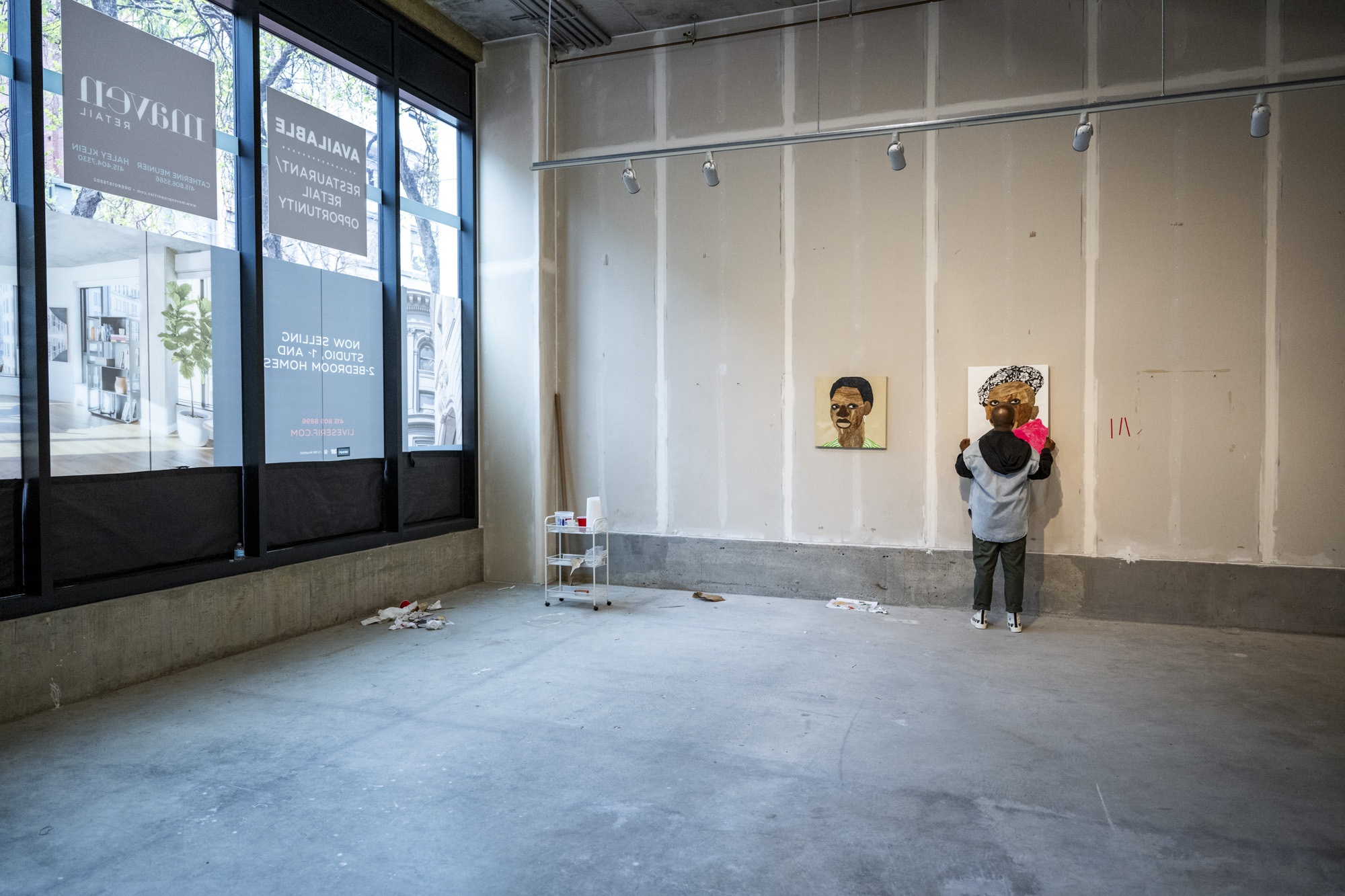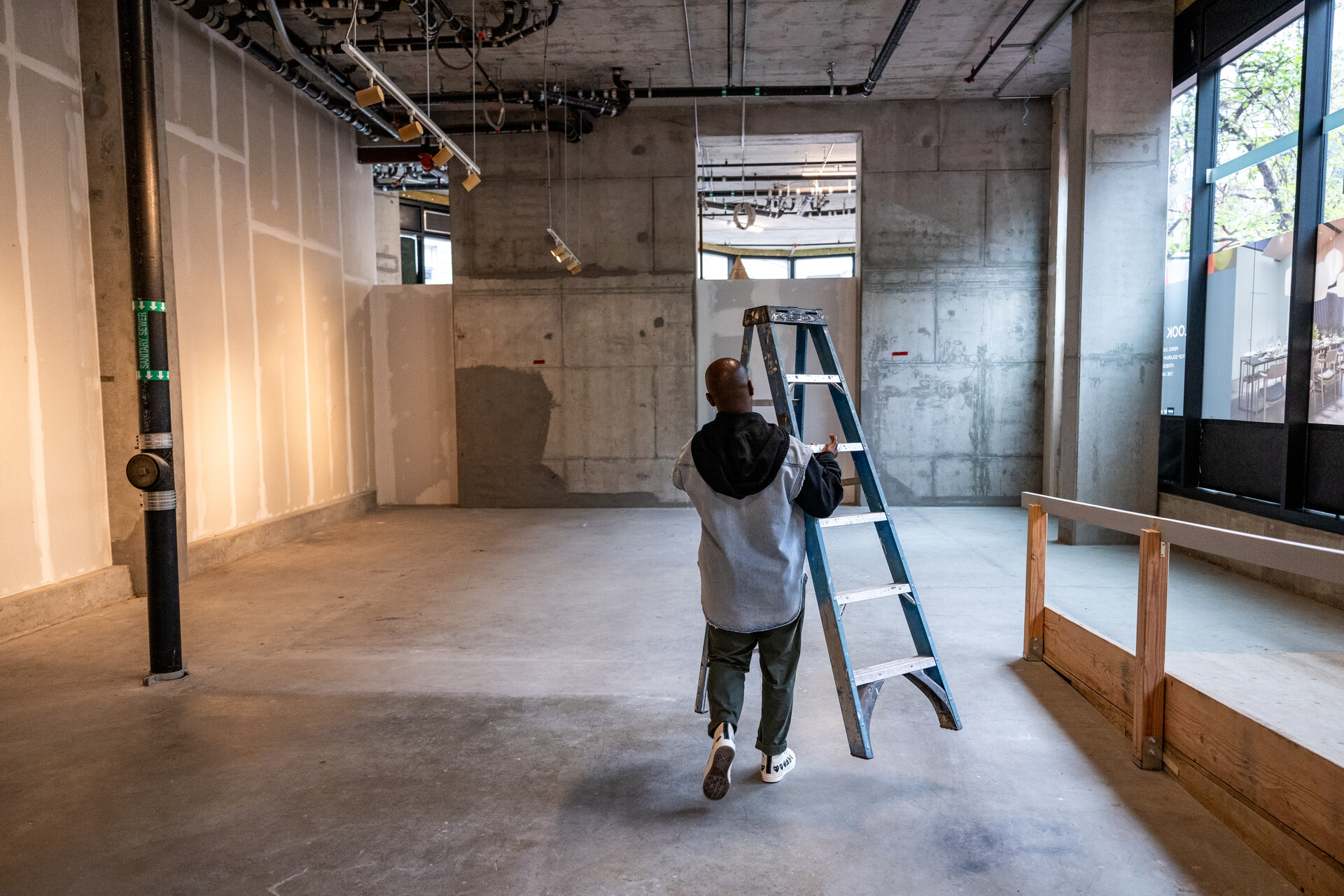Jonathan Carver Moore is not one to rest on his laurels. Less than a year after opening his eponymous gallery on Market Street, he has launched a residency program in the empty 2,600-square-foot retail space next door. Now, Aplerh-Doku Borlabi’s BOLD, on view through June 8, is Moore’s inaugural artist-in-residency exhibition. The Ghanaian artist created all the work for the show — large-scale portraits using coconut sheafs to depict skin — during the seven weeks he spent in San Francisco.
A Gallery Owner With a ‘Let’s-Do-This Attitude’ Launches a Residency on Market Street

Since he opened the gallery in March 2023, Moore has brought the work of several international artists into the space, including South African photographer Zanele Muholi and their Cape Town students, Nigerian painter Odinakachi Okoroafor and Cameroonian artist Sesse Elangwe.
Alongside this international roster, Moore has shown work by a textile artist from Atlanta, a Los Angeles photographer and an Oaklander who now lives in Detroit. He hopes this mingling of local, national and international artists will create a network of its own, with relationships forming that might bring American artists out-of-country opportunities, in turn.

It was only a few months after opening the gallery that Moore started thinking about running a residency. He wanted to give some of those more far-flung artists the experience of working in a different space, and to give Bay Area audiences the chance to see what and how they created. (Moving forward, he plans to invite local artists to the residency as well.)
“I wasn’t sure how it was all going to come together, but I think that sometimes, when you support the community, the community in turn supports you,” he says. “It took a couple of minds coming together to make this happen.”
One of those minds belongs to Joy Ou, a designer, developer and landlord of 960 Market St., the building that houses the gallery and residency. Another belongs to Michelle Mansour, the director of nearby Root Division (where Moore is on the board), who recently announced she’s leaving the arts nonprofit after 20 years.
With all the hype around San Francisco’s “doom loop,” you might think people wouldn’t be interested in heading to mid-Market to see art. But Ou saw that Moore could pack the gallery.

“When he had his opening, he had a line down the block,” she says. “I was like, ‘Who is this guy that he can have this kind of draw?’”
Moore, Ou and Mansour had dinner last summer to talk about the neighborhood and what they could create together.
“Then fast forward to January, and I was like, ‘Hey, what’s happening with this space next door?’” Moore remembers asking Ou. “She said, ‘It’s vacant. What are you seeing happen?’ And the three of us got on the Zoom, and I swear, within an hour, we had a plan.”
Mansour helped Moore put together a budget, factoring in art materials, travel from Ghana and a $5,000 stipend. Ou donated the space for the artist’s ground-floor studio, as well as an apartment upstairs for the residency. Moore called Borlabi to confirm timing and bought the artist a plane ticket.
Like Ou, Mansour appreciates Moore’s focus and determination.
“The idea of just making something happen, a let’s-do-this attitude, as opposed to, ‘We could talk about it or set up meetings to talk about what we’re going to talk about in the next meeting,’” Mansour says. “You can also just do the things, and Jonathan is very much that kind of person.”

Moore, who has a master’s in public relations from George Washington University, reached out to organizations in the Tenderloin and beyond to bolster Borlabi’s residency. He hired a photographer and a videographer to document the artist in the studio and hosted several events in both spaces, including the gallery’s one-year anniversary party and the opening of BOLD. Grants from the New Community Leadership Foundation and Market Street Arts helped pay for those events.
Pamela Hornik, a Bay Area arts supporter and collector of Borlabi’s work, also organized a breakfast at the gallery. Hornik says artists working in empty spaces brings vitality to the area, but organizing that activity requires follow-through.
“It seems like such a simple idea, but nothing is easy. You can’t just use spaces because you have to be able to turn on the heat and turn on the lights,” Hornik says. “The fact that they were able to make this happen is pretty amazing, but Jonathan just makes things happen.”

In the fall, Moore plans to bring in Sesse Elangwe who, like Borlabi, was one of six men from throughout the African diaspora featured in Moore’s second exhibition, Black as an Experience, Not as a Color. Coming up, Moore plans to host a local LGBTQ+ artist in the residency, with the goal of having their work on view when the Pride Parade goes down Market Street in late June.
He says with Borlabi, he saw the difference a residency can make for an artists.
“I think Doku told me that his studio that he works out of and shares with Amoako Boafo is maybe a half the size of the gallery,” Moore says. “So, to have almost 3,000 square feet just for him meant he was able to spread out and just let his mind wander and create.”
‘BOLD’ is on view at Jonathan Carver Moore (966 Market St., San Francisco) through June 8, 2024.

